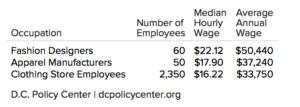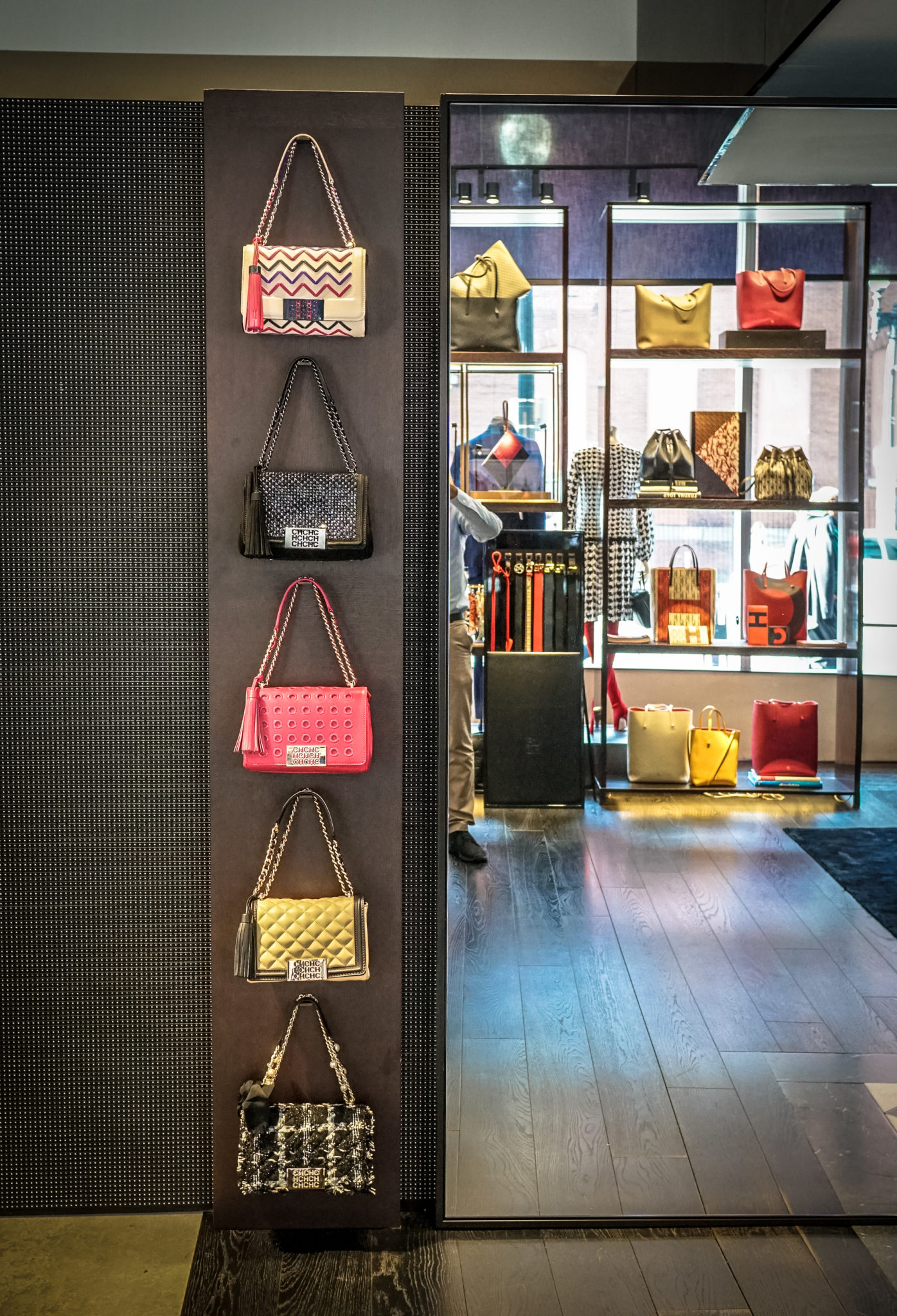Fashion is a multi-trillion-dollar industry that can be the foundation for a local economy.
As the momentum for locally designed and manufactured products continues to grow nationwide, D.C. is poised to be a leader. There is amazing energy and sense of purpose among fashion entrepreneurs in the District. The key players – educational institutions, the private sector, the government, and the consumer — are in place, but the endeavors of each need to be stitched together to create a cohesive pattern for developing and sustaining fashion as a local industry.
Education: Crafting a Foundation
The first component necessary for building a fashion economy is education. In D.C., three universities offer degree programs related to fashion: University of the District of Columbia (UDC), Howard University, and Marymount University. UDC offers an AAS in Fashion Merchandising, focusing on the business – including elements of production and forecasting trends – rather than the design components of fashion. Howard University offers a BFA in Design with a concentration in Fashion Design, where students learn about production, branding, and the increasingly important topic of sustainability of materials. Marymount University offers both fashion design and fashion merchandising degrees.
Private Sector: Weaving Together Individual Components
The second component necessary for building a fashion economy is a strong network of private sector and non-profit entities and individuals. Designers, stylists, PR professionals, influencers, and even lawyers, are a part of the mosaic.
There are many stylists in the DC area who specialize in assisting their clients in dressing appropriately for this unique city. When there is a change in administrations there is often a change in aesthetic and stylists can help clients to adapt. But, where do they shop for these new items? The retail landscape has changed for the better over the last few years in the District. The retail industry in DC, which includes fashion, represents $1.5 billion of GDP for the District, and provides 23,000 jobs. At a time when retail is failing across the US, D.C. has added new stores from national to mom-and-pop.
In D.C., the average wages for those working in the fashion apparel industry are higher than national wages and wages in large states such as California. This is likely due to the relatively small size of the D.C. fashion industry. The average wage for fashion designers, however, is lower than the national average, which is also likely due to the relative lack of fashion designers in D.C.


Local Government: Fostering Innovation and Improving the Business Climate
The third component essential for developing the fashion economy is a local government that would support the needs of a nascent industry. Recent mayoral administrations have focused on the creative industry, including fashion, as a means of growing the District’s creative economy.
During his term in office, Mayor Fenty released a Creative DC Action Agenda to grow the District’s creative economy. Mayor Gray established the Commission on Fashion Arts and Events (CFAE) to promote the fashion and beauty industry within D.C. and to position D.C. as a more competitive environment for fashion through partnerships and stakeholder engagement. The CFAE continues under Mayor Bowser.
In 2016, Deputy Mayor for Planning and Economic Development (DMPED) added the Fashion and Retail sector to its four creative sectors, to encompass makers, service providers, and retailers in fashion and personal care. Additionally, the D.C. City Council established a “Made in DC” initiative and made a commitment to preserve work space for creatives. This initiative, designed to increase pride in local business, creates a certification program for local artisans to brand their products as “Made in DC” with an official logo. People are showing an increased interest in “niche, independent or smaller-chain options.”
An Active Consumer: Valuing Local Artisans and Stores
The final component for bolstering the D.C. fashion industry is an engaged customer: ultimately, the consumer will decide the fate of the fashion industry in D.C. Consumers might be locals who want to see their neighbors succeed, or tourists who want to commemorate their visit to the nation’s capital.
Conclusion
Designers need to create and to do that they need educational opportunities to learn the craft and adequate and affordable space in which to design and produce. The government can assist in that aspect with responsible zoning and tax benefits. The growth in the retail sector can justify government support. The consumer must value a locally made item and locally owned store and seek it out.
If treated as a business and generator of economic growth, fashion can be a viable industry in the nation’s capital.
Feature photo by Ted Eytan (Source).
Hilary Jochmans is president of Jochmans Consulting, LLC, a boutique government affairs practice, and has over 15 years of political and government experience in Washington and New York. A D.C. resident, Hilary holds a B.A. from the University of Virginia and a J.D. from the George Washington University Law School. She is a member of the Women’s High Tech Coalition and the Fashion Group International DC chapter.
